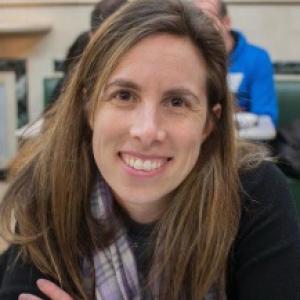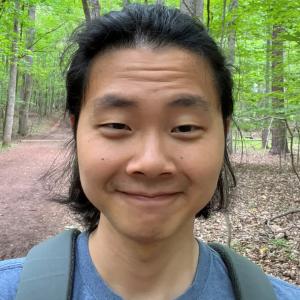
Faculty Network Member of the Duke Institute for Brain Sciences
Email: glickfeld@neuro.duke.edu
Phone: 919-613-0946
Glickfeld Lab
Functional organization of visual cortical circuits
Our everyday activities require that we process and react to a rich mixture of sensory stimuli. In vision, these stimuli are spatial, temporal and spectral patterns of light that the retina transmits to the cortex. Neural circuits in the cortex must then achieve two seemingly disparate goals: 1) assemble an accurate and unified representation of the visual world, and 2) flexibly meet the demands of each situation by selecting relevant information and discarding distractors. To understand how cortical circuits achieve these vital tasks, our goal is to determine how neuronal connectivity and synaptic dynamics combine to encode sensory input and support perception.
Our research is focused on the synaptic organization of the mouse visual cortex. This is an ideal system for studying the conjunction of anatomy and physiology in sensory processing because 1) the stimuli that physiologically drive these neurons are well characterized, 2) the visual cortex is easily accessible for monitoring and manipulating neuronal activity, and 3) there are good behavioral readouts for determining the effect of these manipulations on perception.
Using this as our model system, we are addressing the following two broad questions:
What are the cellular and circuit mechanisms for processing diverse sensory input?
How do these circuits shape perception?
Lab Members
Lab Alumni
Postdocs:
Charlie Hass (Data Scientist, Core Compete Consulting)
Naomi Bean (Regulatory Coordinator, Duke Cancer Institute)
PhD Students:
Ashley Wilson (Senior Product Manager, Verily)
Miaomiao Jin (Postdoctoral Fellow, Wang Lab, MIT)
Jennifer Li (Postdoctoral Fellow, Komiyama Lab, UCSD)
Lan Luo
Masters’ Students:
Greg Payne (Adult Medicine Resident, Carle Illinois College of Medicine)
Yingming Pei (TBD)
Undergraduate Students:
Jeffrey Sims (with distinction; Ophthalmology Resident, NYU)
Anika Mukherjee (Senior Software Engineer, Humane)
Aiwei Yan (Internal Medicine Resident, Vanderbilt)
Gary Hoffman (with distinction; Family Medicine Resident, Texas A&M)
Catherine Yeo (TBD)
Megan Stone (with distinction; PhD Student, OHSU)
Devesh Shah (Research assistant, Moffit and Caspi Labs, Duke University)
Research Technicians:
Emily Burke (Dual Masters and MDiv Student, Wake Forest University)
Robin Blazing (Postdoctoral Fellow, Franks Lab, Duke University)
Rohan Bhat (Clinical Research Coordinator, Massachusetts General Hospital)
Theodora Christopher (President/Founder, Salutemp)
Courtney Dobrott (PhD Student, Person Lab, UC Denver Anschutz)
Megan Fowler (PhD Student, UMass Chen Medical School)
Benjamin Gincley (PhD Student, Georgia Tech)
Jennifer Isaac (PhD Student, Marugan Lab, Emory University)
Gloria Kim (MD Student, Medical University of South Carolina)
Amy Kristl (PhD Student, Miri Lab, Northwestern University)
Kyra Leonard (MD Student, NY Medical College)
Grace Link (PhD Student, Kyriazis Lab, The Ohio State University)
Ian Matthews (PhD Student, Cortes Lab, University of Alabama Birmingham)
Camaron Mangham (Junior Data Scientist, Take2 Consulting)
Kevin Murgas (MD-PhD Student, Sandhu Lab, SUNY Stonybrook)
Andrew McKinney (Postdoctoral Fellow, Tolias Lab, Stanford University)
Nevyana Todorova (Clinical Research Coordinator, Cedars-Sinai Medical Center)
Thomas 'TJ' Wagner
Lindsey Wilson (MD/PhD Student, Virginia Commonwealth)
Research Projects

Linking cortical circuit computations to visual perception
We aim to understand how different cortical cell types, with a focus on inhibitory interneurons, regulate spatial and temporal integration in the visual cortex. We are investigating how these computations vary as a function of cell type, behavioral state, and cortical area. We are also using psychophysical measures to determine the impact on perception. This project harnesses electrophysiology, calcium imaging, optogenetics, cell-type specific pharmacology, behavior and computational modeling.
Circuit mechanisms for the construction of invariant representations
We aim to understand how the brain generates invariant representations that remain stable despite variations in irrelevant features such as size, angle, and lighting. Specifically, in collaboration with the Priebe Lab at UT Austin, we focus on the synaptic and circuit mechanisms that enable invariant coding of motion direction—known as pattern selectivity—in the visual cortex of mice and marmosets. This project uses intra- and extracellular electrophysiology, calcium and glutamate imaging, optogenetics and computational modeling.
Mechanisms and plasticity of history-dependent processing in the visual cortex
What we see now is strongly shaped by what we just saw. We aim to understand the mechanisms underlying visual adaptation and how this impacts cortical coding and perception. We are particularly interested in the mechanisms enabling feature-specific adaptation where different stimulus features drive distinct degrees of adaptation, and its effect on visual acuity. This project uses intra- and extracellular electrophysiology, behavior and computational modeling.
Publications

Li, Jennifer Y., Charles A. Hass, Ian Matthews, Amy C. Kristl, and Lindsey L. Glickfeld. “Distinct recruitment of feedforward and recurrent pathways across higher-order areas of mouse visual cortex.” Curr Biol 31, no. 22 (November 22, 2021): 5024-5036.e5. https://doi.org/10.1016/j.cub.2021.09.042.
Jin, Miaomiao, and Lindsey L. Glickfeld. “Mouse Higher Visual Areas Provide Both Distributed and Specialized Contributions to Visually Guided Behaviors.” Curr Biol 30, no. 23 (December 7, 2020): 4682-4692.e7. https://doi.org/10.1016/j.cub.2020.09.015.
Jin, Miaomiao, and Lindsey L. Glickfeld. “Magnitude, time course, and specificity of rapid adaptation across mouse visual areas.” J Neurophysiol 124, no. 1 (July 1, 2020): 245–58. https://doi.org/10.1152/jn.00758.2019.
Murgas, Kevin A., Ashley M. Wilson, Valerie Michael, and Lindsey L. Glickfeld. “Unique Spatial Integration in Mouse Primary Visual Cortex and Higher Visual Areas.” J Neurosci 40, no. 9 (February 26, 2020): 1862–73. https://doi.org/10.1523/JNEUROSCI.1997-19.2020.
Jin, Miaomiao, and Lindsey L. Glickfeld. “Contribution of Sensory Encoding to Measured Bias.” J Neurosci 39, no. 26 (June 26, 2019): 5115–27. https://doi.org/10.1523/JNEUROSCI.0076-19.2019.
Jin, Miaomiao, Jeffrey M. Beck, and Lindsey L. Glickfeld. “Neuronal Adaptation Reveals a Suboptimal Decoding of Orientation Tuned Populations in the Mouse Visual Cortex.” J Neurosci 39, no. 20 (May 15, 2019): 3867–81. https://doi.org/10.1523/JNEUROSCI.3172-18.2019.
Glickfeld, Lindsey L. “Visual Attention: Mice Can Use Spatial Cues Too.” Curr Biol 28, no. 5 (March 5, 2018): R230–31. https://doi.org/10.1016/j.cub.2018.01.072.
Glickfeld, Lindsey L., and Shawn R. Olsen. “Higher-Order Areas of the Mouse Visual Cortex.” Annu Rev Vis Sci 3 (September 15, 2017): 251–73. https://doi.org/10.1146/annurev-vision-102016-061331.
Hass, Charles A., and Lindsey L. Glickfeld. “High-fidelity optical excitation of cortico-cortical projections at physiological frequencies.” J Neurophysiol 116, no. 5 (November 1, 2016): 2056–66. https://doi.org/10.1152/jn.00456.2016.
Goldey, Glenn J., Demetris K. Roumis, Lindsey L. Glickfeld, Aaron M. Kerlin, R Clay Reid, Vincent Bonin, Dorothy P. Schafer, and Mark L. Andermann. “Removable cranial windows for long-term imaging in awake mice.” Nat Protoc 9, no. 11 (November 2014): 2515–38. https://doi.org/10.1038/nprot.2014.165.
Open Positions

We currently have openings for motivated graduate students and postdoctoral fellows with interests and/or experience in in vivo or in vitroelectrophysiology, two-photon imaging or behavior.
We are also looking to hire committed undergraduate students willing to spend >15 hours per week to assist in surgical procedures, behavioral training or anatomical projects.
Interested candidates should send their CV, a brief statement of research interests and goals, and the names and contact information of 3 references to Lindsey Glickfeld at glickfeld@neuro.duke.edu.





